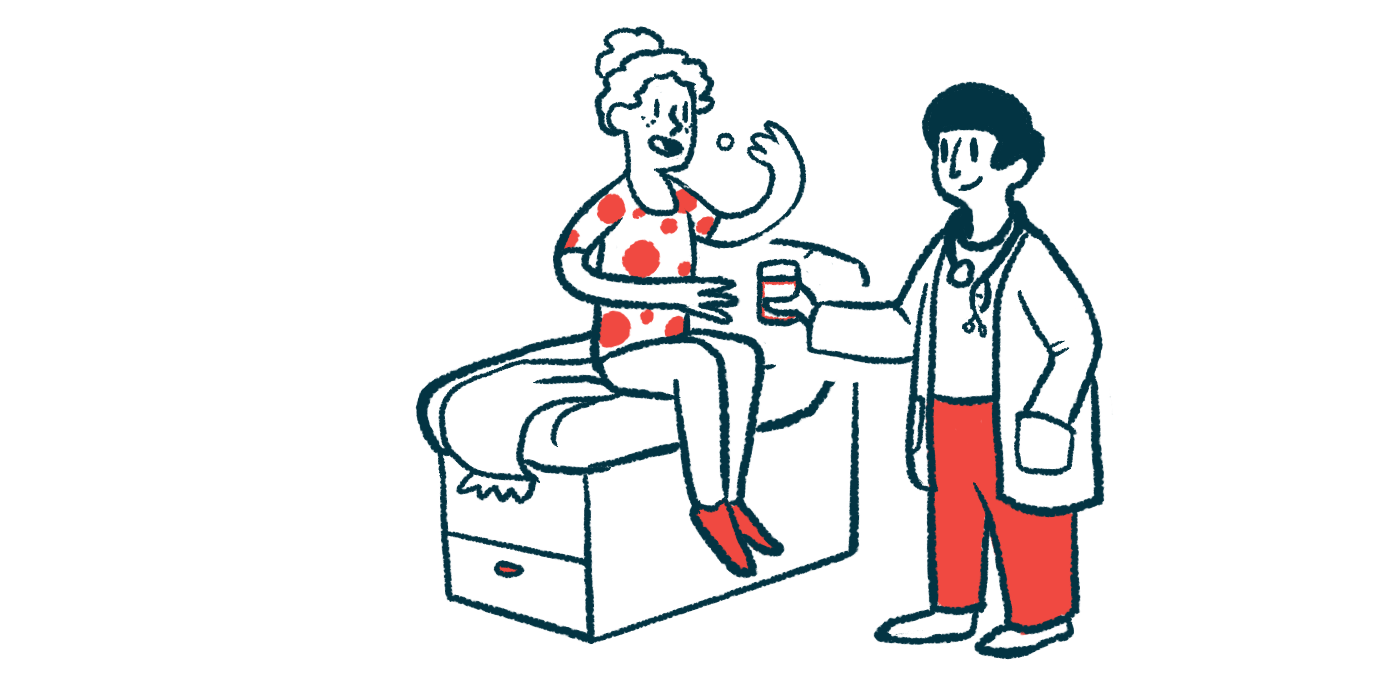Rapid, lasting benefits seen in new-to-Orladeyo patients in real world
Number of HAE swelling attacks reduced soon after treatment start: Data

People with hereditary angioedema (HAE) who were new to Orladeyo (berotralstat) treatment saw rapid reductions in the number of swelling attacks they experienced soon after starting the oral therapy, according to real-world data from the U.S.
The benefits of Orladeyo lasted as long as 18 months, or about 1.5 years, and were seen regardless of how severe the patients’ disease was before the therapy’s start. Additionally, whether patients had been on previous preventive therapy, or how low their C1-inhibitor (C1-INH) level and function were, did not impact the benefits seen.
“We continue to be encouraged by the consistent, building body of real-world evidence demonstrating the significant benefit that our oral, once-daily prophylactic [preventive] therapy can provide to people living with HAE,” Ryan Arnold, chief medical officer at BioCryst Pharmaceuticals, Orladeyo’s developer, said in a company press release.
Orladeyo has been approved in the U.S. since December 2020, and is a prophylaxis, or treatment designed to prevent swelling attacks. It’s also approved in the European Union and in other countries worldwide.
The real-world data were presented at the 2024 American Academy of Allergy, Asthma & Immunology annual meeting, held Feb. 23-26 in Washington, D.C.
Compiling data on therapy’s use in real world
In HAE types 1 and 2, a faulty or missing C1-INH protein causes kallikrein to become overactive and trigger the excessive release of bradykinin. Too much bradykinin causes blood vessels to widen and become leaky, resulting in swelling attacks that can arise rapidly in any part of the body.
Orladeyo is indicated for adults and children with HAE, ages 12 and older. The therapy, given in the form of oral capsules, works by blocking the activity of kallikrein. In clinical trials, it has been shown to reduce the number of swelling attacks regardless of prior therapy.
Now, BioCryst is adding to its knowledge of the treatment’s use outside of clinical studies.
“These additional analyses of real-world use of Orladeyo show that any person living with HAE has the potential to experience a rapid, substantial and sustained reduction in their monthly attack rate,” said Jonathan Bernstein, MD, a professor of medicine at the University of Cincinnati.
In one poster, researchers presented data from 335 people with HAE types 1 or 2 who received 110 or 150 mg of Orladeyo for up to nearly 18 months, or 1.5 years. Median monthly attack rates dropped from a baseline — the number at the trial’s start — of 1.33 to 0.5 after treatment.
Baseline monthly rates were calculated based on each patient’s self-reported number of swelling attacks over the 90 days, or three months, prior to starting Orladeyo, and by dividing that value by three.
These … analyses of real-world use of Orladeyo show that any person living with HAE has the potential to experience a rapid, substantial and sustained reduction in their monthly attack rate.
Benefits were seen within the first three months, and continued for as long as 18 months across all patient subgroups — from those who had no swelling attacks at baseline to those who had 10 or more, and for whom the median monthly swelling attacks dropped from 3.33 to 1.58.
“Long-term prophylaxis with berotralstat [Orladeyo] resulted in rapid and sustained reductions in HAE attack rates, regardless of baseline attacks,” the researchers wrote in an abstract to the poster.
Benefits of Orladeyo seen for broad range of HAE patients
Another poster abstract reported data from 216 patients who had previously been on at least one other prophylactic therapy, such as Takhzyro (lanadelumab), subcutaneous or under-the-skin C1-INH, or androgens, at some point in their lifetime.
After switching to Orladeyo, patients who had been on Takhzyro saw their median monthly attack rate drop from a baseline of one to 0.33 in the first three months. They remained below baseline, at 0.5, through to 18 months of therapy. Other patients experienced similar benefits, as reported in clinical trials.
In a third poster’s abstract, the researchers reported how well Orladeyo worked for HAE patients with C1-INH deficiency, as well as in those with normal C1-INH level and function.
In a group of 402 patients with C1-INH deficiency, the median monthly attack rate dropped from a baseline of 1.33 to 0.5 after the therapy’s start. In 302 patients with normal C1-INH level and function, it went from a baseline of three down to 1.5 after 18 months.
These results show the therapy’s benefits across a broad range of patients, according to Bernstein, who also is a partner of the Bernstein Clinical Research Center, in Cincinnati.
“From patients who live with severe disease to well-controlled patients and those who have a history of being treated with other long-term prophylaxis that carry a therapeutic burden, these data demonstrate that once patients begin oral, once-daily Orladeyo, they can experience attack control over the duration of their treatment,” Bernstein said.





